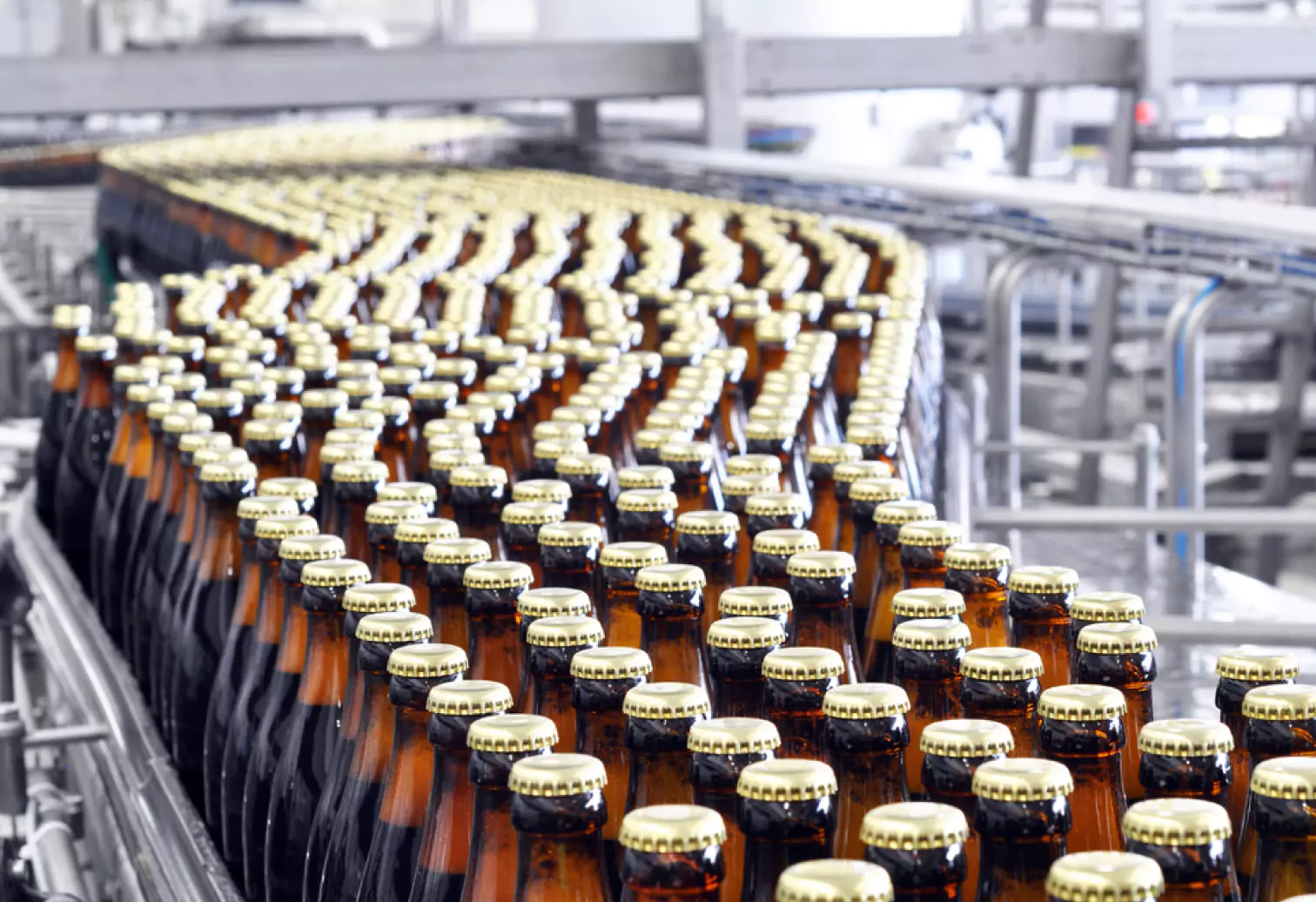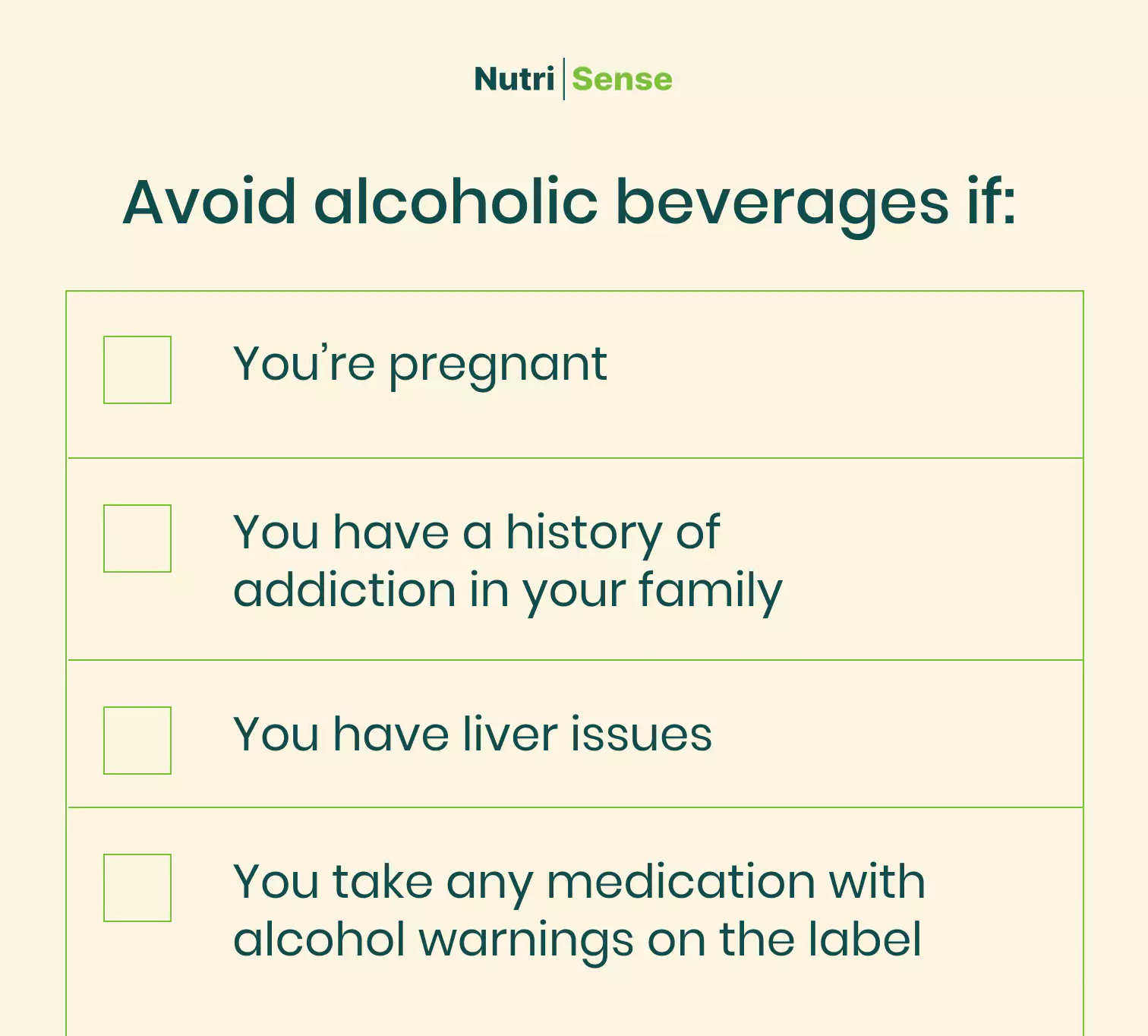Beer 101: A Quick Guide to Beer and Your Health

Key Takeways
Lager, ale, craft beer, IPA... do you have a favorite type of beer? As one of the most popular alcoholic beverages in the world. It's a beverage that has been around for thousands of years (you can actually trace it back to 9500 BC), and it never seems to go out of style.
From the brewing process to the ingredients, there’s a lot to know about this alcoholic drink. And, yes, it does have some health benefits too! We're taking you through some must-knows of beer in this first installment of a two-piece series on beer and your health.
Read on to learn more about beer making, whether beer can benefit your health, and what types of beer you should try.
How Is Beer Made?

There are typically 10 steps to the beer-making process. Every brewery may have slightly different ways of completing the brewing process. Different brewers will use different brewing and edging techniques and various equipment, flavors, and ingredients. However, the general approach will remain the same.
The main ingredients in beer are water, hops, grain, and flavor infusions.
The most common grain for beer is barley, a cereal grain with enzymes that help with the fermentation process. Some types of beer (like stout) also use oats and dryer types of beer use rice. Some brewers also use grains like wheat and rye.
The yeast helps ferment the sugars, and the hops add flavor and aroma. And then, of course, malt is integral to certain types of beer making and adds color to your beer. You also get malt extracts now, making the process easier for home brewers. Beers like Belgian darks and brown ales are usually quite malty.
Even if you're not planning to brew your own beer, knowing the basics of the brewing process can be pretty interesting. Here’s a basic breakdown of the 10 steps involved in brewing beer:
1) Milling
Most beer is made from oats, barley, wheat, or rye. Once the brewer chooses the grain they wish to use, it's milled. This breaks it down and exposes the starches inside the husks. After the grain is milled, it’s referred to as grist.
2) Mashing
Once the grist is created, it is put into a mash tun machine. Inside the mash tun, the brewer will mix grist with hot water releasing natural enzymes to break down the starch into sugars.
3) Separating and Boiling the Wort

Once the starches have been broken down, a liquid called wort is separated from the grist. Brewers do this using a machine called a Lauter tun. The wart will sit in a vessel where it is boiled, removing green particles.
4) Adding Hops
The next step in this process is adding hops to provide the flavor. Hoppy or beer is typically more bitter. Hops may be added to beer during different parts of the brain process and strongly affect the flavor and aroma.
5) Cooling
During the cooling phase, the wart is filtered even more. All solids are removed from the brew at this time. Then, it is cooled down.
6) Fermentation

Once the wart is cooled to the right temperature, the brewer will begin to ferment the beer. To do this, they must add yeast. Once the yeast is in, the fermentation process begins, and sugar converts into alcohol and carbon dioxide.
7) Maturation
Once the beer is done fermenting, it will need to “sit” or mature. This allows the beer to develop its flavor and “settle.“ The stage ensures that the right flavor sets into the brew.
8) Filtration
Once the brew matures, it is filtered once again.
9) Carbonation
After filtration, carbonation is finally added to the beer. This is what makes your beer frothy. Different brewers will use different methods to infuse carbonation into their brews. Some breweries will use force carbonation—carbon dioxide added in using a highly pressurized container. This is also the most efficient method to add carbonation to beer, which is why it is the most common.
10) Packaging

Now your beer is done! The brewer will then approve it for packaging. Beer is packaged in cans, bottles, and kegs.
* An Optional Step: Aging
Some Brewers will choose to age their brews in a process called cellaring. They will choose to do this to develop a more complex flavor or a higher alcohol content.
Some Different Types of Beer

Our next piece will focus more on types of beer and their nutritional content, but here’s a little information about some common types of beer in the meantime:
Lager: Lager is a relatively new style of beer. They ferment for a long time at low temperatures and rely on bottom-fermenting yeasts, which will sink to the bottom of the fermenting tank.
Ale: Ale has many subcategories, including brown ale and pale ale. It's made with a warm temperature fermentation process that takes a short period. Brewing ale requires top-fermenting yeasts, which float on top of the brew wallet or tank for months.
Stout: Stouts are dark, roasted fails. They’re often more bitter than other dark beers. When poured out, they usually have a thick, foamy head (the foam at the top of your glass). Guinness beer is the most popular type of stout.
Porter: Porters are a dark ale with a roasted malt aroma. Porter is often fruity and dry in flavor.
Blonde Ale: Blond ale is often marketed in the summer due to its light, sweet flavor. Blonde ales are pale in color and are usually crisp and dry.
Brown Ale: Brown ales contain many different colors and flavors. They usually range in color from a darker brown to light amber. Brown ales will be characterized by the brewer that creates them.
Pilsner: Pilsners are a type of lager and are typically very hoppy in scent and flavor. They are light golden and usually made with neutral to hard water.
Pale Ale: Pale ale is an English-style ale. Pale ales usually have a fruity scent and copper coloring.
India Pale Ale (IPA): India pale ale is also English in origin and uses extra hops. Also known as IPAs, they are more bitter than a traditional pale ale.
Wheat: Wheat beers are light beer that is usually soft and smooth, with citrus and spice notes. The German-style Hefeweizen is a popular style of wheat beer.
Sour Ale: Like sourdough bread, sour ales are brewed using wild yeast. They are tart in flavor and often carry notes of fruit.
But is Beer Healthy?

Not exactly, but it’s not necessarily unhealthy. Beer is an alcoholic beverage, which means that you need to consume it in moderation regardless of any health benefits. Talking about the health benefits of an alcoholic beverage may seem confusing. Still, some health benefits are associated with drinking beer in moderation, likely due to its ingredients.
Moderate consumption of alcoholic beverages is typically considered one drink a day for women and one to two drinks a day for men.
Some Potential Health Benefits of Beer Consumption
Here are some of the benefits a glass or two can deliver thanks to the ingredients in beer.
- Reduced risk of heart disease.
- Reduced risk of stroke. Light or moderate consumption was associated with reduced risk, while excessive consumption was associated with high risk.
- Beer contains antioxidants and vitamins like iron, vitamin B, calcium, and phosphates.
- Beer may help your body prevent kidney stones.
- Beer increases our ‘good’ HDL cholesterol.
Some Health Risks of Beer Consumption
Of course, like all alcoholic beverages, beer comes with a host of risks as well. Here are a few in a nutshell:
- Beer is high in carbohydrates
- Drinking alcohol may lead to liver damage
- High blood pressure risks
- Addiction

Does Beer Affect Your Blood Sugar Levels?
Like most types of alcohol, beer can impact your blood sugar in different ways. Beer contains high amounts of carbohydrates, which break down into sugars, causing spikes in your blood sugar if you consume too much.
Remember that alcohol is also an appetite stimulant. If you drink enough alcohol, you may overeat because your body isn’t registering that you’ve eaten enough. Alcohol consumption may also affect your body‘s insulin effectiveness.
Everything you consume can alter your blood sugar levels, and beer is no different. Remember to consume it in moderation and consider using a tool like a continuous glucose monitor to track how your body responds to foods and drinks.
If you have diabetes, hyperglycemia, hypoglycemia, take medication for blood sugar-related conditions, or have insulin issues, speak with a doctor before consuming any alcoholic beverages.
There’s so much more to know about this alcoholic beverage that we couldn’t fit it all into one piece! To learn more about beer, how it impacts your blood glucose, the nutritional content of different types of beer, and much more, read the second piece in this series here!
Find the right Nutrisense programto turn insight into progress.
Go Beyond Glucose Data with Nutrisense
Your glucose can significantly impact how your body feels and functions. That’s why stable levels are an important factor in supporting overall wellbeing. But viewing glucose isn't enough. Nutrisense, you’ll be able to learn how to use your body's data to make informed lifestyle choices that support healthy living.
One-to-one coaching
Sign up to access insurance-covered video calls to work with a glucose expert: a personal registered dietitian or certified nutritionist who will help tailor your lifestyle and diet to your goals.
Monitor and measure what matters
With the Nutrisense CGM Program, you can monitor your glucose with health tech like glucose biosensors and continuous glucose monitor (CGM)s, and analyze the trends over time with the Nutrisense App. This will help you make the most informed choices about the foods you consume and their impact on your health.
Find your best fit
Ready to take the first step? Start with our quiz to find the right Nutrisense program to help you take control.

Katie is a dietitian at Nutrisense. With over 11 years of experience as a dietitian in many areas of nutrition, Katie has worked as a clinical dietitian within a hospital, as well as in the fields of diabetes, sports and performance nutrition, recovery from addiction, and general wellness. She’s also an athlete and has run 8 marathons, including the Boston Marathon.




